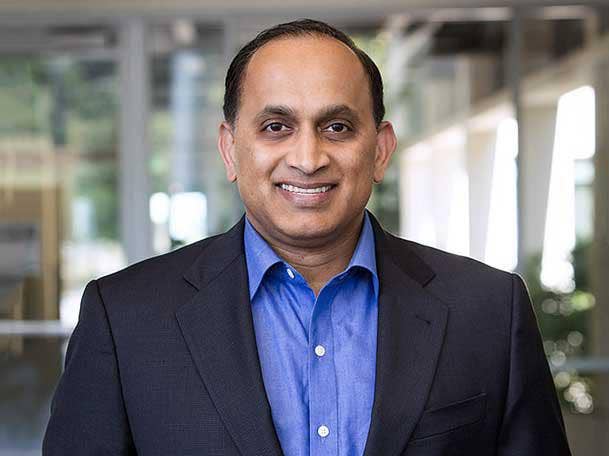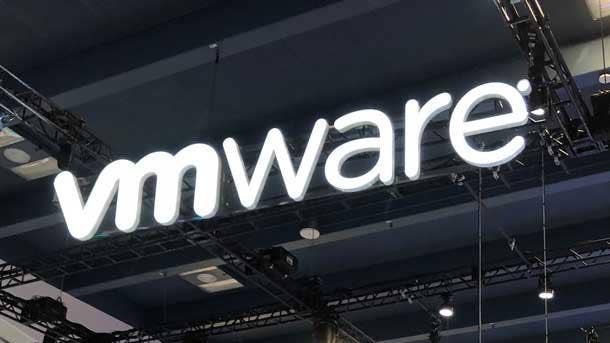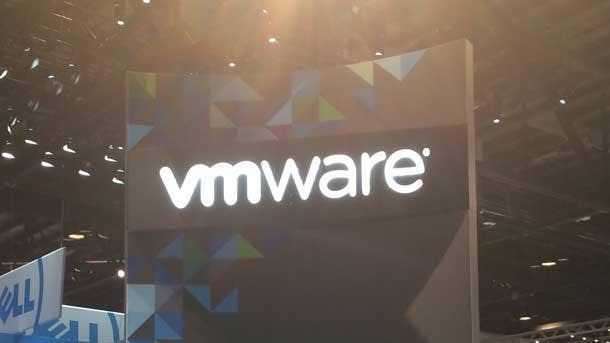VMware COO Sanjay Poonen's Six Biggest Statements From CloudLIVE
‘Stay humble, stay hungry. I never want to lose the roots of that 18-year-old Sanjay who came to Boston Logan Airport and had 50 bucks in his pocket,’ says the chief operating officer of the Palo Alto, Calif., cloud computing and virtualization software and services company.

VMware wants to become the “world standard” for container and Kubernetes, according to Sanjay Poonen, chief operating officer of the Palo Alto, Calif., cloud computing and virtualization software and services company.
“Because we believe that we were instrumental in creating 70 million VMs (virtual machines) over the course of the last 20 years…we should play a meaningful role in the evolution of virtual machines to containers,” Poonen said today at the CloudLIVE conference hosted by CloudHealth by VMware at the new Encore Boston Harbor resort casino in Everett, Mass.
VMware is approaching the one-year anniversary next month of its reported $500 million acquisition of what was then CloudHealth Technologies, a Boston-based, public cloud management platform company.
CloudHealth by VMware now has $11.2 billion of cloud spending under management and close to 7,000 customers – more than double the amount when it was acquired -- and will finish the year with nearly 500 employees globally, according to CEO Tom Axbey.
Poonen -- who’s responsible for VMware’s worldwide sales, services, alliances, marketing and communications -- spoke to CloudHealth’s role in VMware’s SaaS transformation, VMware’s push into containers, Kubernetes and security, and his view of leadership among other topics during his “Embrace and Accelerate to the Cloud” talk at CloudLIVE. Click through to read what he had to say.

‘World Standard’ Of Containers And Kubernetes
“The world of applications is moving from simple packaged apps to containerized-based modern apps, and we've made some big moves there. Because we believe that we were instrumental in creating 70 million VMs over the course of the last 20 years -- that's the name, VMware has been synonymous with VM -- we should play a meaningful role in the evolution of virtual machines to containers. So we made some big moves the last three weeks. We put 3,000 people -- post the close of Pivotal (Software) -- on this topic of containers, and we expect to become the world standard in containers and Kubernetes through the efforts of not just Pivotal, but the company we acquired a year ago, Heptio, that were the founders of Kubernetes. If you're considering other competitive products in containers, whether it's OpenShift or Anthos, we want to be the best in that container movement.”

VMware Is A ‘Switzerland-Type Of Company’
“We did some research on what customers are looking to get out of this move into the multi-cloud world, and the hope and the promise was these things like speed, agility, the flexibility and the ability to serve your customers better. But the reality is very different. Today, it's difficult to do this in a kind of hand-brokered way, a manual way, just managing a lot of your cost management through spreadsheets. Doing this with just a tool and with one cloud is not effective. So we looked at this problem, and we said, ‘Listen, we've got to solve this in a fundamentally new way.’”
“First of all, it's very important that we build relationships with all the big cloud providers. If you look back 20 years ago, the most important companies to VMware were the hardware companies -- Dell, HP, IBM and now Lenovo. But what is the cloud? It's just a new hardware economy. We were effective in getting all of the old hardware economy to work with VMware. We've got to make sure that we have all the new hardware economy...and we began to chip away at that. And that was, for us, a turning point. For those of you who have been tracking VMware, 2015, 2016 was actually a low point for this company, because we didn't have our cloud strategy. We had a turning point…where we said, we have got to embrace the public cloud and build this bridge into the public cloud.”
“We began that relationship with Amazon, and Amazon embraced VMware. I described this...as sort of that Berlin Wall moment. VMware and Amazon were competitors for a long time. When we got on stage and said we're going to allow this to be a place where VMware workloads could move to Amazon, the world was shocked. We are today the only company that has all of the top six public clouds embracing VMware -- AWS, Azure, Google, Alibaba, IBM and Oracle. That's very important, because at the infrastructure level, you want to know that you're working with a company that has deep relationships with those public clouds. We obviously keep it very guarded, because we want to make sure that we're (not) sharing things across, but they respect the fact that we're a Switzerland-type of company.”

Why VMware Is Buying Carbon Black For $2.1 Billion
“We feel there's a big opportunity today in security. There's just too many vendors in it. There's 5,000 companies...in 15 to 20 major categories. And I've described this often as going to a doctor to stay healthy. If you went to your doctor, and she said to stay healthy, you've got to take 5,000 tablets, you just do the math. It would take you a week to eat a tablet every 30 seconds. That shouldn't be the way in which you stay healthy. Our goal is to fundamentally transform this into something different, which is you make security part of your diet. You eat your vegetables, your proteins, your fruit, drink your water, brush your teeth, and it becomes more intrinsic as opposed to 5,000...tools.”
“We began over the last six years an effort to begin this security journey in the networking area. In the networking area, which is the biggest focus in security, it’s all being done through hardware appliances. We felt if we could secure the data center, the branch, the firewall and load balancing, we could completely revolutionize network security. Why should you have to do this with Cisco and Palo Alto and Riverbed and F5? These are just companies who have built a hardware-based approach to networking. This can all be done now through NSX in our network security portfolio, and quietly we've been building on that 13,000 customers of NSX. About half of them use us for security use cases. So I would argue about half of our revenue for NSX is security-related, and very few people even know us in the security world of networking.”
“Then we looked at the next area of big spending in security, which was the endpoint...both an endpoint of the device and the workload and the server. And we found that load was also broken, largely because many of these folks are not innovating. What ends up happening when you don't innovate is new companies come on to the scene, and the old companies get acquired. Symantec recently got acquired by Broadcom, and typically when you get acquired in that scenario by a big hardware company, new people leave, because the dominant thing that these companies want to do is cut costs.”
“We thought there was a fundamental opportunity to really innovate in the endpoint area, and there's two or three other important areas like identity, cloud, and the entire telemetry of data coming out of this called analytics. We feel these five control points are fundamentally new areas of security that can be solved in a more intrinsic fashion. Today, if you look outside of VMware trying to do this, they're all point vendors. You may have a leader like Cisco or Palo Alto in networking, you have a Symantec or McAfee in endpoint and another set of players in identity and another set of players in analytics. We felt that there was a tremendous opportunity to do all five of these over time. The biggest two are network and endpoint, so we decided to acquire Carbon Black. They are one of the two companies that we felt were doing this in a very different way, which was more AI, big database, in the cloud, 5,600 customers, a leader in this segment. And you'll see us -- post to close, which will happen in a few weeks -- lay out a completely new portfolio of products...that do endpoint security in a radically different way from Symantec or McAfee. We will add some IP from VMware to this app defense and vulnerability management. And then we'll take this portfolio and integrate this into VMware and the ecosystem.”

SaaS Transformation Of VMware
“We have probably four areas, once we bring Carbon Black in, that are at the tip of the journey of that SaaS transformation for VMware. We said in our earnings call, anticipating these new acquisitions, we will move from what was the low single digits of hybrid cloud and SaaS at VMware a year or two ago to (where) we're about 12 or 13 (percent). When we add Carbon Black, about 20 percent of our revenue will be hybrid cloud and SaaS, and Carbon Black, CloudHealth, Workspace ONE and VMware Cloud on AWS will become the top offerings that are driving pure SaaS revenue. Pivotal is a combination of SaaS and also subscription on-prem. The core of VMware is learning more and more of that SaaS motion. Even an experienced company like us, we have to learn from the startups that have that innovative way in which they're doing things.”

The VMware Partner Ecosystem
“Ecosystem and partnerships are one of the things VMware does really well. We've really, really made that a part of my discipline. The tough thing in life is to be able to get speed and scale. Startups have speed, they don't often have scale. Big companies have scale, but they don't often have speed. The ecosystem is all about having a force multiplier. If you are a partner in this room and represent, for example, a systems integrator, and we train you on what our multi-cloud management story is, you can talk to 5,000 or 50,000 customers without us the room. That provides a scale as a force multiplier.”
“We have 75,000 partners at VMware. Our goal has been constantly to empower them with the message, with the solution, so they can do it without us in the room. It's a key part of our story.”

What His 50-Year-Old Self Would Tell His 25-Year-Old Self
“I'd say the same thing I tell myself today, which is be a servant leader. Stay humble, stay hungry. I never want to lose the roots of that 18-year-old Sanjay who came to Boston Logan Airport and had 50 bucks in his pocket. I feel extremely honored and privileged. I grew up as a poor boy in a third-world country. Everything that I've been able to do is a gift. I did work hard. It's not that I had some kind of silver spoon. We have to work harder, especially when you have children who may have grown up with more than you've grown up (with).”
“(Servant leadership) is something that's changed my fundamental perspective in life. Most organizations are run...top down, and the poor birds who are sitting in the bottom of that rung look up, and you know what they get, right? It's like the CEO bird is just like crapping down on everybody else. Our job as leaders...especially the higher level you go, is to invert that pyramid. If you are serving a customer, if you're serving a partner, and if you are feeling like you're the lowest rung of that ladder, our job as leaders is to serve you and take the obstacles out of the way. And when you as a leader or a manager internalize that, you actually are a happier person when you give. When you serve other people, there's inherent joy.”
“I'll end on sort of this inspirational note. One of my heroes is an Indian poet writer, named Rabindranath Tagore, and he wrote this beautiful poem. It has three lines. He said, ‘I went to bed and dreamt that life was joy. I woke up and realized that life is service. I acted, and service is joy.’”